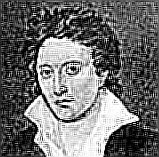Remembering "Adonais" by Percy Bysshe Shelley: A Pastoral Elegy for John Keats
Adonais: A Poetic Lament and Tribute to a Valuable Life
A Pastoral Elegy is a song of grief in which the poet in the guise of a Shepherd mourns the death of some dear and near ones who are also presented as a Shepherd. As it is already stated, pastoral elegists mourn a subject by representing the mourner and the subject as shepherds in a pastoral setting. Representing all these conventions, Adonais is a Pastoral Elegy. It has been criticized on the ground that the expression of grief in it is not sincere, for one who sincerely mourns expresses his grief directly and does not run after metaphors or figurative expression (the dreams and fancies of Adonais as his mourners, to bring in the mountain shepherds, and to personify the power of nature may be good poetry but it is urbanely artificial) But as a matter of fact, Adonais is not an expression of personal sorrow. Shelley never claimed it to be so. It is a lament on the loss of a valuable life as ‘Lycidas’. Also, Keats and Shelley had never been intimate friend, and Shelley did not think highly of any of his of …. than, "Hyperior”.
Shelley's Sympathy and Personal Connection on Keats: Reviewers, and Sincere Grief
Percy Bysshe Shelley was attracted by Keats because he founded in him a poet of promise, and because his sympathy was aroused of by the story, though wrong, that he had been killed by the brutal attack on his Endymion in the Quarterly Review. That is why we are not told so much of Keats as about the Reviewers who are supposed to have caused the death of a great poet.
However, it will have to be admitted that expression of grief has a greater ring of sincerity that that of Milton in Lycidas, who is more concerned with his friend. Shelley is more sincere than Arnold in Thyrsis, which was written five years after the death of his friend Clough, because Shelley has himself suffered at the hands of the same reviewers. As he himself tells us, he is a ‘partial mean’.
The Pastoral Tradition and Classical Influence in Shelley's 'Adonais': A Unique Elegy for John Keats
Shelley chose the Pastoral convention for his elegy, for he had such noble examples as his precedents as Milton’s ‘Lycidas and Spenser’s ‘Astrephel’. He used the classical form , so that he may connect his theme with the great poetic tradition of the world, and so that the may represent Keats as one of a long series of poets, all native of the same enchanted country and all children of the same mother, uranir.
Though Adonais has lose resemblances with lycidas, which can not be accidental, yet lycidas was not Shelley’s model. He went directly to Greek Masters. Shelley’s elegy is closely modeled upon Bion’s lament of Aphrodite for Adonais. But Shelley has changed the spirit and made the work entirely his own by the touch of his genius.
Pastoral Elements and Modern Departures in 'Adonais': A Subtle Interplay of Tradition and Innovation
As a pastoral elegy, adonais closely follows the classical machinery, of pastoral. It may bed divided into two parts. The first running up to the 38 th stanza, is cast in the pastoral mould ; there is the traditional of invocation to weep, sympathetic mourning in nature, procession of mourner consisting of the flocks of dead Shepherd, and his follow shepherd , personal digression and invective,. In the second part (17 stanza), Shelley strikes a modern note. There us change if mood, and final consolation.
In the first part the poet closely follows the Pastoral convention. There is the traditional invocation to weep; the procession of mourners consisting of the Dreams of Keats represented as him flock, nature objects, and contemporary poets, including Shelley. The portrait that Shelley gives of himself is unique in many ways. The quick succession of abstract images imparts an element of vagueness to the description of Shelley. The inactive (angry or abusive language) is a weak spot in the poem.
It may also be noted that while the general atmosphere is Pastoral, the Pastoral note itself is weaker and thinner, and lee consistent in ‘Adonais” than is the case with ‘Lycidas” and ‘Thyrsis”. In ‘Adonais’ the pastoral note is entirely absent from the first eight stangas , it is shuck for the first time in the ninth stanza, continues till the seventieth stanza, and then ceases for the nest twelve stanzas . It ageing begins in the twentieth stanza, continuer in the magnificent vein for six stanzas, and then dies out altogether.
 |
| Percy Bysshe Shelley |
In the Second the note of sorrow changes to one of hope and joy. But the change is the not abrupt. It is gradual and the two parts have been artistically blended into a single whole. The transition takes place in the 38th stanza. The readers are asked not to mourn the death of Adonais who wakes a sleep with the part of the eternal. This thought reminds us of, naught we known of death, of the 20th stanza. In this way the two parts run into each other and the artistic unity of the whole is maintained.
Conclusion
The greatness ‘Adonais” are due primarily to that part of it, which steers clear of Pastoral convention.” It is so because in the first part Shelley’s fancy was chained down by the shackles of convention and in the second part he, ‘Soars aloft mighty wings”.
Thus the following point proves that Adonais is a Pastoral elegy. Not only that, the in-depth use of the Spenserian stanza contributes much to the artistic perfection of this elegy.
References
Adonais : Shelley, Percy Bysshe, 1792-1822 : Free Download, Borrow, and Streaming : Internet Archive. (n.d.). Internet Archive. https://archive.org/details/adonaisshelley00shelrich

Great discussion sir. This one helped me in exam.
ReplyDelete